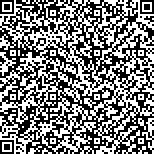Archive > Volume 44 Issue 2 > 2018,44(2):326-333. DOI:10.7519/j.issn.1000-0526.2018.02.013 Prev Next
Performance Verification of MediumRange Forecasting by T639, ECMWF and Japan Models from September to November 2017
- Article
- Figures
- Metrics
- Preview PDF
- Reference
- Related
- Cited by
- Materials
Abstract:
The mediumrange forecasting performances of T639, ECMWF and Japan (JP) models from September to November 2017 are verified and compared. The results show that all the three models could predict the variation and adjustment of the atmospheric circulation over Asian middle and high latitudes well. The ECMWF model has good performance in predicting activities of the western Pacific subtropical high (WPSH) while the T639 model predicts the position of WPSH further north. For temperature at 850 hPa, mean forecast error by ECMWF model is smaller than by other two models. The T639 (JP) model gives lower (higher) temperature forecast than the observation respectively. As far as Typhoon Mawar is concerned, all the three models predict its position more northwest and strength weaker. However, the ECMWF model could show the direction change of this typhoon. The ECMWF model performs much better in forecasting the intensity of cold high pressure during a cold air process while the T639 and Japan models create greater errors.
Keywords:
Project Supported:
Clc Number:


Mobile website









